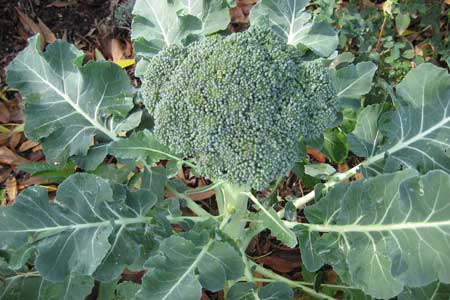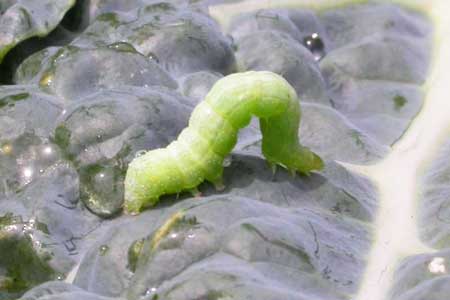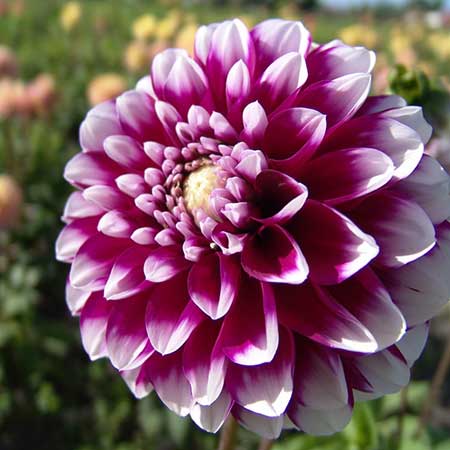February Gardening
Cabbage, Broccoli, Cauliflower all need planting now.
Lovely, warm Februrary should see vegetable gardens a picture of abundance with a plentiful supply of fresh salad greens, peas, beans, carrots and new potatoes.

Plant out Brassicas
This is your last chance to plant cabbage, cauliflower and broccoli for winter to give them enough growing time to form hearts before our growing season comes to an end.
Remember not to plant them into ground that has previously grown any of the cabbage family. Repeated planting of the brassica tribe back into the same soil usually invites the dreaded disease ‘clubroot’ into your garden.
The variety of ‘Success’ cabbage and cauliflower plants have proved to be clubroot resistant and are definitely worth it - in a small urban garden it is so easy to forget where cabbages were planted last season. In my own garden, as an extra precaution against clubroot disease, I make a trench and fill with Nichol's Organic Compost and plant my brassica into the compost filled trench . I get wonderful results, and no sign of the dreaded disease!

Caterpillars
Caterpillars can very quickly devastate a crop of cabbage, cauliflower and broccoli. A cunning plan to stop these critters munching your cabbages as they cruise along the rows is to cover the plants with our new ‘bug net’. This will most certainly stop these pesky white butterfly pests from colonising your cabbage patch and your vegetables will be kept chemical free too!
Watering
If water is available and conditions are dry, water the garden regularly and deeply to keep plants vigorous and healthy. Your best friend in dry weather is your ‘push-pull hoe'. The very best mulch of all is continuous hoeing that will encourage deep moisture to rise and plant roots will grow downwards toward the rising moisture and nutrients.

Flowers
In the flower garden potted colour comes into its own now that some of our summer colour is beginning to fade and will fill in the gaps created when we are tidying. Empty pockets can be planted with showy petunias, salvia, dianthus, marigolds, and begonia edged with alyssum.
Dahlias are enjoying a high old time right now and your patio can be instantly enhanced with our big tubs of flowering dahlias.
Dahlias spent years being banished from ‘avant gardens' simply because their colours were considered brash and loud, however, a breath of fresh air is needed in most gardens so now borders are pulsating with lush plump heads of colour. Pompoms, cactus, waterlily and decorative ‘heads’ are the talk of the town! Come the last days of summer the dahlia continues to bloom when other plants are flowered out. colour is their trump card.
Top marks go to Hydrangeas that simply look ‘right’ when grown in shade. They make marvellous container plants in town gardens and their late summer flowers are invaluable. They continue to look good all winter as their flower heads deepen in colour and then remain decorative all winter. There is also climbing Hydrangea which will cover a shady wall with greenish-white lace-cap flowers. These are slow starters but become more vigorous later.
Autumn colours
Good autumn colour is always a good reason to grow a plant. Mellow yellows in autumn can blend better in the garden than the flashy scarlet crimson leaves.
Ginkgo has good yellow colour and well suited to sheltered gardens. Well worth considering are the birches which all have good clear yellow autumn leaves.
Some of the maple tribe have subtle autumn tones and then the blowtorching yellow of liquid amber will make a dramatic backdrop in autumn.
Even my own vegetable garden is showing off bright yellow ‘Little Cutie’ pumpkins scrambling up tripods and along the ground in front of espaliered pears with ripening yellowing fruit. Pot marigolds are popping their flowers through the pumpkins and adding a splash of colour as they wander among the courgettes.
It’s hard to believe but spring bulbs are arriving at our garden centre. Anemone and Ranunculus are the first to appear. Anemone de Caen with beautiful single flowers and the double blooms of St Brigid are extraordinarily free flowering in the garden and simply magnificent in pots. The anemone corms are uninteresting odd shaped pellets that look like rabbit droppings but in spring they burst into fairytale flowers. Plant the anemone corms with their points downwards and Ranunculus with their ‘claws’ down.
Happy gardening everyone
4110